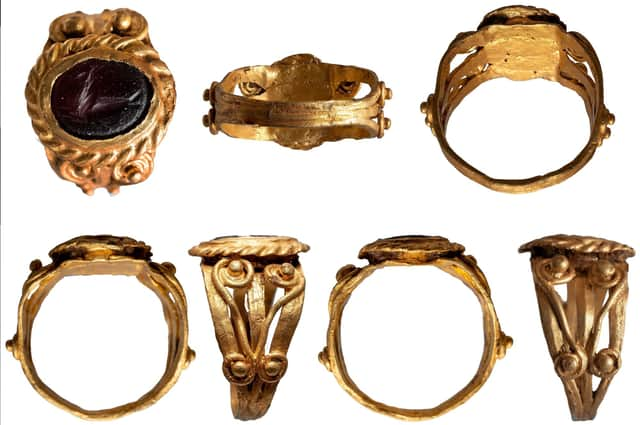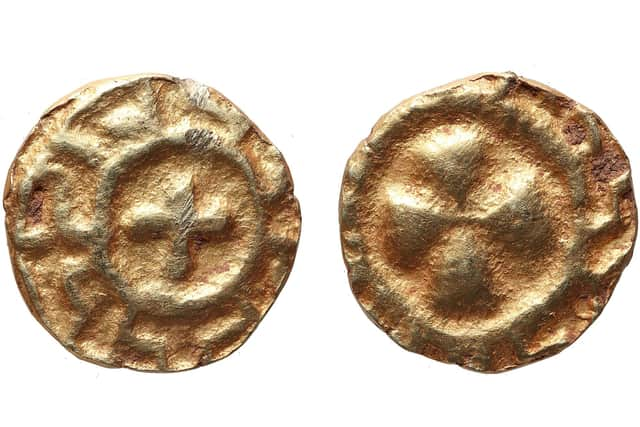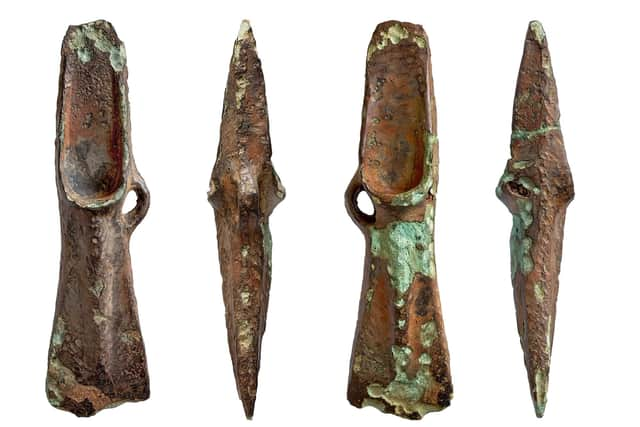Lincolnshire tops the charts for archaeological finds discovered in 2022 in the UK in new report from British Museum


Today (Tuesday, January 23) the British Museum launched the latest Portable Antiquities Scheme (PAS) Annual Report.
This showed that in 2022, 53,490 archaeological finds were recorded, including 1,378 ‘Treasure’ cases, the highest ever reported in a single year.
Advertisement
Hide AdAdvertisement
Hide AdThe record-breaking figures announced at Sutton Hoo Anglo Saxon burial site in Suffolk, highlight the huge contribution that members of the public are making to increasing archaeological knowledge in the UK today. Most objects have been found by people metal-detecting, and most of the finds were made on cultivated land where they otherwise could be lost to ploughing. A small proportion were found through mud-larking, which involves scouring muddy riverbanks for finds.


The counties recording the most PAS finds in 2022 were Lincolnshire (5,101), Norfolk (4,265) and Suffolk (2,727) - all agricultural counties where detecting is popular. In the same period, Norfolk (95), Hampshire (83) and Kent (81) had the highest number of Treasure finds.
An intricately carved bone rosary bead, a 3,000-year-old beautifully preserved gold dress fastener and a hoard of Iron Age gold coins concealed inside a hollow flint container are among the most significant finds in the UK during 2022.
The Portable Antiques Scheme, run by the British Museum, encourages members of the public to register the objects they find, to help further knowledge of history and archaeology.
Advertisement
Hide AdAdvertisement
Hide AdRecent finds in the county include medieval coins in Mumby, near Sutton on Sea, a Bronze Age axe near Wragby and a gold Roman finger-ring near Bassingham.


Dr Lisa Brundle, finds liaison officer at Lincolnshire County Council, told Lincolnshireworld: “2022 was an extraordinary year for Lincolnshire, with many more metal-detectorists kindly coming forward and reporting their finds to their local Finds Liaison Officer (FLO).
“Lincolnshire has such a rich history hidden beneath our feet, and objects found in our county all help to build the picture of our past. But we’re a large county! Metal-detectorists, with permission from landowners, are helping to fill gaps in our knowledge by spending their time searching the land and reporting their discoveries.
“The local officers, supported by teams of volunteers, have been working very hard to identify, research and record the amazing archaeological finds discovered by the public. From Bronze Age axes, early medieval coins and gold Roman finger-rings, each item tells us a new story.”
Advertisement
Hide AdAdvertisement
Hide AdIf you find an archaeological object in Lincolnshire – whether whilst out metal detecting, walking, or even just gardening – find out more about registering your find at www.finds.org.uk.
All the Finds Liaison Officers working for the PAS across the country are employed locally but work as a national team directed by the British Museum.
Thousands of archaeological objects are discovered every year, many by members of the public, most by people while metal-detecting. If recorded, these finds have great potential to transform archaeological knowledge, helping archaeologists understand when, where and how people lived in the past. PAS (www.finds.org.uk) offers the only proactive mechanism for recording such finds, which are made publicly available on its online database.
Under the Treasure Act (www.finds.org.uk/treasure) finders have a legal obligation to report all finds of potential ‘Treasure’ to the local coroner in the district in which the find was made. The success of the Act is only possible through the work of the Portable Antiquities Scheme, advising finders of their legal obligations, providing advice on the process and writing reports for coroners on Treasure finds.
Advertisement
Hide AdAdvertisement
Hide AdIn the UK the definition of Treasure is any metallic object, with at least 10 per cent of its weight being gold or silver, that is at least 300 years old when found.
Last year the definition was updated. If found after July 30, 2023, an object may be potential Treasure if it does not meet the above criteria but is made at least partially of metal, is at least 200 years old, and provided exceptional insight into an aspect of national or regional history, archaeology or culture by virtue of one or more of the following:
• its rarity as an example of its type found in the United Kingdom
• the location, region or part of the United Kingdom in which it was found, or
• its connection with a particular person or event
Advertisement
Hide AdAdvertisement
Hide AdThe Act allows a national or local museum to acquire Treasure finds for public benefit. If this happens a reward is paid, which is (normally) shared equally between the finder and landowner. Interested parties may wish to waive their right to a reward, enabling museums to acquire finds at reduced or no cost. Rewards are fixed at the full market value of the finds, determined by the Secretary of State upon the advice of an independent panel of experts, known as the Treasure Valuation Committee.
The Treasure process is administered at the British Museum which supports a responsible approach to searching for finds as outlined in the Code of Practice for Responsible Metal-detecting in England and Wales that helps protect archaeology and advance our knowledge of the past.
